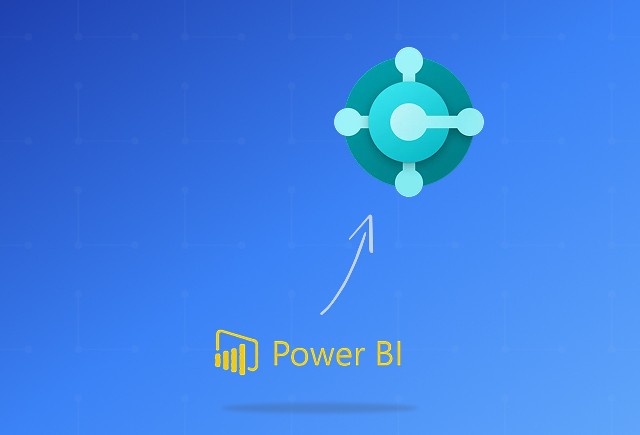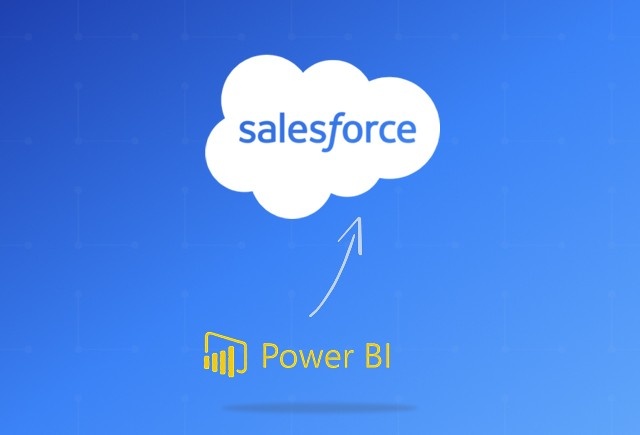Dynamics 365 On Premise to Cloud Migration [Everything You Need to Know]
Oct 16, 2024 Aiswarya Madhu
As the deadline for Dynamics 365 on-premises support approaches, organizations must act quickly to plan their migration to the cloud. The extended mainstream support deadline is set for January 12, 2027, pushing IT admins to strategize effectively to ensure a seamless transition and maintain operational integrity.
So, if you're planning a Dynamics 365 on-premise to cloud migration, there are a lot of factors you need to consider to ensure a successful transition. Let's dive deep into the key aspects you need to manage for a smooth migration.
Why Migrate Dynamics 365 On-Premise to Cloud?
Migrating from on-premises Dynamics 365 CRM to the cloud is not just a trend—it's a necessity for organizations looking to thrive in today’s fast-paced business environment. Beyond the support deadline, the benefits of cloud migration are key to future-proofing your organization and staying competitive in a rapidly evolving digital landscape. Here are some compelling reasons to make Microsoft Dynamics 365 Cloud migration.
1. Cost Efficiency
Organizations investing in on-premises systems often face high maintenance expenses, including server upkeep, software upgrades, and IT personnel required to manage the infrastructure. Cloud solutions, in contrast, eliminate hardware expenses and generally offer subscription-based pricing models, allowing organizations to pay only for the services they need.
For instance, companies that transitioned reported a 10.25% reduction in Total Cost of Ownership (TCO) and a 30% to 50% decrease in deployment costs compared to maintaining on-premises systems.
2. Tight Security and Compliance
Microsoft invests heavily in security for its cloud products, offering robust data protection features that may be difficult and costly to implement in an on-premises environment. Dynamics 365 Cloud provides built-in security measures, such as data encryption, multi-factor authentication, and compliance with regulatory standards, ensuring that sensitive customer data is safeguarded against threats.
3. Access to Latest Features and Updates
With Microsoft adopting a cloud-first strategy, new features and improvements are continually released for Dynamics 365 Cloud users. On-premises versions, however, may become obsolete as support for older versions, such as Dynamics CRM 2011 and 2013, has already ended. Migrating to the cloud ensures that organizations always have access to the latest updates, functionalities, and capabilities that can improve business processes and enhance productivity.
4. Scalability and Flexibility
One of the greatest advantages of dynamics 365 on premise to online migration is the scalability it offers. As businesses grow and evolve, their operational needs change. Dynamics 365 Cloud allows organizations to quickly scale their resources based on demand, adding or removing users and services with ease. This level of flexibility is often unattainable with traditional on-premises systems, which require significant time and resources to adjust.
5. Improved Collaboration and Accessibility
Cloud solutions enable teams to work together more effectively, regardless of their physical location. Users can access Dynamics 365 Cloud from anywhere with an internet connection, facilitating remote work and improving response times. Enhanced collaboration tools also allow employees to share information in real-time, driving better decision-making and faster project completion.
6. Reduction in Data Loss Risk
Dynamics 365 on premise to online migration minimizes the risk of data loss thanks to automated backup processes and disaster recovery plans. With on-premises systems, organizations are responsible for implementing their backup strategies, which can often be inconsistent. In contrast, Dynamics 365 Cloud provides automatic backups, ensuring that data is protected and recoverable in the event of hardware failure or other disasters.
Dynamics 365 On-Premise vs. Dynamics 365 Cloud
| Category | Dynamics 365 On-Premise | Dynamics 365 Cloud (Online) |
|---|---|---|
| Control & Maintenance | Full control over data & infrastructure, but costly maintenance and upgrades are manual. | Microsoft manages updates & security, no maintenance required on your end. |
| Infrastructure | Requires on-site hardware, which increases setup and long-term costs. | No hardware needed, reducing costs and offering flexibility. |
| Data Security | Full responsibility for security; relies on internal measures and infrastructure. | Hosted on Microsoft’s secure cloud with 24/7 monitoring and robust security protocols. |
| Accessibility | Accessible only within local networks or via VPN, limited remote access. | Accessible from anywhere with internet access, offering complete flexibility. |
| Cost | Higher upfront costs for infrastructure and maintenance; potential savings if infrastructure is reused. | Recurring subscription costs, but reduced infrastructure and management expenses. |
| Scalability | Scaling up requires significant investment in new infrastructure and IT resources. | Easily scalable to meet changing business needs without extra hardware investment. |
| Feature Access | Limited access to newer features and services like Power BI, Power Automate, etc. | Immediate access to the latest cloud-based tools and features, including tight integration with the Power Platform. |
| System Updates | Managed internally; upgrades must be planned and implemented by your team. | Automatic updates managed by Microsoft, ensuring you always have the latest version. |
As you plan your Dynamics 365 on-premise to cloud migration, it's essential to evaluate your backup and restore strategies to ensure data security and business continuity. A robust backup plan tailored to your organization's needs will protect your data throughout the migration process and beyond. Want to learn more?
Contact our Dynamics 365 Experts TodayDynamics 365 On-Premise to Cloud Migration Steps
Migrating from an on-premises Dynamics 365 instance to the cloud requires careful planning and execution. Below is a checklist to help ensure a smooth and successful migration.
1. Evaluate Your Current System
Review Functionalities: Begin by conducting a comprehensive review of the key workflows and features in your existing Dynamics 365 system. Identify the functionalities that are critical for your business operations and need to be migrated. This includes understanding how these workflows interact with your daily activities and ensuring that their built-in processes can be replicated or improved within the cloud environment.
Analyze Customizations: Document all customizations currently implemented in your on-premises instance. This includes custom fields, entities, forms, or workflows that have been tailored to suit your organization's unique needs.
Next, determine which customizations are still relevant and should be carried over to the cloud. Some customizations may need to be modified to align with the new environment, while others may become obsolete and can be eliminated to simplify the migration process. Engaging stakeholders in this analysis can provide valuable insights about which customizations are vital for ongoing operations.
Check Data Quality: Data integrity is paramount for a successful migration. Before starting the migration, thoroughly clean your data by removing duplicates, outdated entries, and irrelevant information. Utilize data cleansing tools and practices to rectify errors and ensure that your data is accurate and complete.
This process not only improves the quality of the data being migrated but also helps in preventing potential issues that could arise due to inaccurate or duplicated data in the cloud. Additionally, creating a data mapping strategy will assist in transferring data smoothly from the existing system to the new cloud instance.
Assess Licensing: Examine your current licensing agreements and understand how they will change once you transition to the cloud. Licensing models can vary significantly between on-premises and cloud environments, often requiring adjustments based on user count, functionalities, and additional services.
Ensure to account for any additional cloud licenses that may be needed to maintain compliance and to fully leverage Dynamics 365's cloud capabilities.
2. Choose Your Cloud Deployment Model
Public, Private, or Hybrid: Choosing the appropriate cloud deployment model is crucial. Assess your business's needs in terms of control, flexibility, and cost. A public model may offer cost savings and easier scalability, while a private cloud could provide enhanced security and control. The hybrid option allows you to maintain some on-premises resources while leveraging cloud benefits, enabling a customized approach to your IT infrastructure.
Microsoft SaaS Option: Consider utilizing Microsoft’s Software-as-a-Service (SaaS) option for a managed infrastructure. This model allows businesses to offload the responsibility of maintaining hardware and software updates to Microsoft, ensuring that your cloud environment remains secure and up-to-date while reducing the burden on your IT team.
3. Develop a Data Migration Strategy
Prepare Data: Before initiating your migration, it is essential to ensure that your data is clean and well-structured. This means reviewing and organizing your data to eliminate duplicates and irrelevant entries, making the migration process more streamlined.
Backup Data: Conducting a complete backup of your data is critical to safeguard against potential loss during the transition. This backup serves as a safety net, allowing you to revert to your original data if needed during the migration process.
Test Migration: Perform a small-scale test migration to identify any issues that may arise before the full-scale transition. This preliminary step can help you rectify problems without affecting your primary operations, providing valuable insights into the migration process.
Map and Validate: Accurately map your data fields from your on-premises system to the cloud setup. After migration, validate the integrity of the data to ensure it has transitioned successfully and maintains its functionality within the new environment.
4. Decide on Re-Implementation vs. Upgrade
Upgrade: Opt for an upgrade if your existing customizations are largely compatible with the cloud version and only require minor adjustments. This pathway can minimize the time and resources necessary for migration while retaining the core functionalities you already depend on.
Re-Implementation: Consider re-implementation for a fresh start with minimal customizations to fully exploit the new cloud features. This approach allows your organization to streamline business processes according to current needs rather than adapting outdated configurations from the past.
Following best practices is essential to avoid common challenges and ensure data accuracy. Read our blog to learn how to develop a solid migration strategy and ensure a smooth, successful transition.
Read the Full ArticleDynamics 365 On-Premise to Cloud Migration Steps
5. Set Up Your Cloud Environment
User Roles and Permissions: Establish user roles and permissions to control access to your Dynamics 365 environment effectively. This ensures that team members can carry out their tasks without jeopardizing data security or operational integrity.
Configure Workflows: Set up workflows and automated processes tailored to your business needs. Configuring these systems will enhance operational efficiency, reducing manual intervention and streamlining tasks across your organization.
Third-Party Integrations: Ensure that your cloud configuration integrates seamlessly with any essential tools and platforms your organization relies on. This integration can enhance functionality and improve overall efficiency in data management.
6. Post-Migration Testing and Optimization
Validate Data: Ensure all data is accurate and properly integrated.
Monitor Performance: Continuously check the system’s performance and address any issues.
User Training: Train your staff on the new system to ensure smooth adoption.
7. Address Data Archival and Compliance
Archive Legacy Data: Identify which legacy data needs to be archived and how it will be stored securely.
Compliance Checks: Make sure all data, including archived information, is compliant with relevant regulations.
Bottom Line
Dynamics 365 On-Premise to Cloud Migration is more than just a technical upgrade; it’s a strategic move that aligns businesses with modern needs. As enterprises continue to evolve, the flexibility and innovation provided by the cloud become critical in driving long-term success. Whether you're looking to streamline operations, reduce costs, or enhance customer experiences, moving to the cloud ensures that your business is future-ready.
Frequently Asked Questions
Recent Posts

Dynamics 365 Business Central Power BI Integration [A Complete Guide]
Jan 07, 2026

Smart Ways to Cut Tariff Risk with AI Agents in Dynamics 365
Dec 16, 2025

Power BI Salesforce Integration Guide
Dec 16, 2025
Category
Our Expertise
About Author

Aiswarya Madhu
Aiswarya Madhu is an experienced content writer with extensive expertise in Microsoft Dynamics 365 and related Microsoft technologies. With over four years of experience in the technology domain, she has developed a deep understanding of Dynamics 365 applications, licensing, integrations, and their role in driving digital transformation for organizations across industries.
Never Miss News
Want to implement Dynamics 365?
We have plans which will meet your needs, and if not we can tweak them around a bit too!


